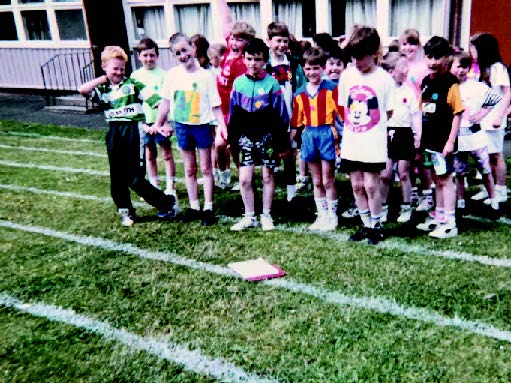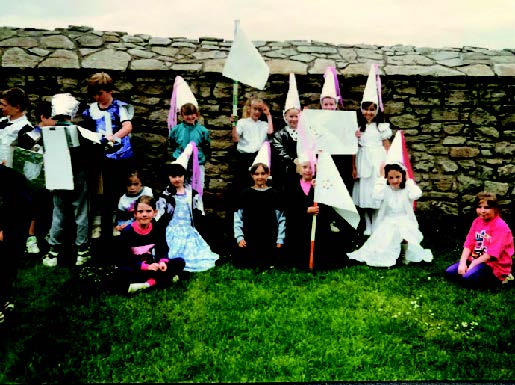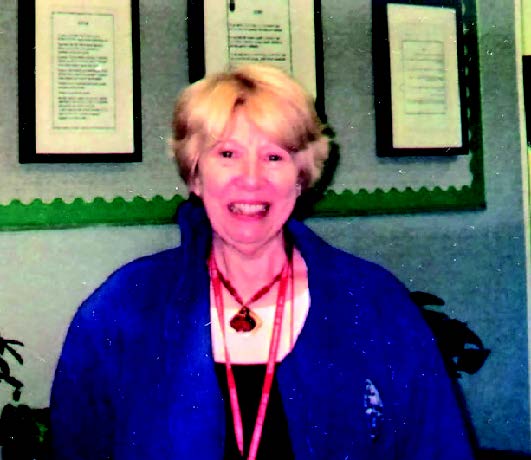
Long-time EIS Rep Sheila Hay looks back on her working life – which included an entire career spent in the same primary school, together with more than three decades as the branch Rep.
My 46 year career is a case study on teaching in general over that time and unique in that I have stayed in the same primary school for my whole career.
I trained at Craiglockhart College of Education and was one of 160 students in my year, a quadrupling of earlier years to deal with a surge in the pupil population in the 1970s.
I started at St. Joseph’s Primary, Edinburgh in April 1974 on my final teaching practice. Little did I know that I would still be there 46 years later! There were 16 classes, 2 straight streams, 2 composite classes and a nursery. There was a Headteacher, a teaching Depute Headteacher and an Infant Mistress, and that was the management structure. They were ably supported by the school secretary who did everything on paper and kept meticulous records.
As a teacher I was given a syllabus to teach, I filled a page a week in a record of work and got on with the job of teaching. Most of our children came from the Broomhouse area, along with a double-decker bus from the new suburb of Wester Hailes with 90 children on board. It was some 4 years later that the first “mixed” denomination school was opened at Clovenstone Primary and the bulk of the bussed children disappeared from our roll. This was my first introduction to compulsory transfers and also my active interest in the EIS. To have an agreed policy on the process to be followed was the key to fairness, rather than someone being selected on a subjective basis.
I became the EIS rep when the teacher who had had the role retired. I had been a student EIS member and became a full member when I started teaching. I had shown an interest in the work of the union and my predecessor encouraged me to accompany her to local association meetings. These took place at Moray House College of Education, a large venue, with hundreds of teachers attending. The meetings lasted 2 hours, from 4pm to 6pm or 7pm to 9pm. While it often felt like the last thing I wanted to do after teaching all day, talking to colleagues from other schools gave me an insight into what was happening across the city. I still find such meetings important, informal networking provides an opportunity to share ideas and can lead to friendships.
The late 70s and the 80s were times of political activity for the EIS. We took strike action: 1975 was linked to the Houghton Report, 1979-80 were linked to the Clegg Commission. 1984-86 I recall the most, because we wanted an independent pay review to take place as we didn’t feel at all valued; our pay was so low some teachers with families were eligible for benefits. The Review did happen and the Main Report was the eventual outcome.
As the school rep I would collect a levy from members to help compensate for the loss of pay for those who were taking extended, targeted action. John Pollock was the General Secretary. It is sad to reflect now on the division that industrial action and the levy caused amongst staff then. People were passionate about their beliefs and sometimes action or non-action was remembered for a long time after increased salary was received.
We wanted better pay and conditions and I remember marching along Princes Street in support of our claim. In those days it took 18 years to reach the top of the pay scale and every time it was shortened they took out steps and I kept sliding back. It eventually took me 21 years to reach the top!
A new post of Senior Teacher was introduced to reward teachers for staying in the classroom. It was originally supposed to be for every teacher at the top of the pay scale, but when it was realised that in my own school, for example, there were 5 of us in that position, it suddenly became a promotion to be applied for and the numbers in each school were reduced, usually in primary to only be one.
Then the approach to teaching and learning changed and we had 5-14, with its levels A,B,C,D and E and National Testing was first introduced. From 1993 the test results were published in the newspapers and league tables were formed. The government also introduced parental choice of school, and this combination led to the rise of some supersized primary schools in the city.
Now, of course, we have Curriculum for Excellence, first introduced in 2004, with its Experiences and Outcomes, and since 2019 SNSAs, not quite National Tests but it is interesting to consider how over time the same issues emerge.
The curriculum has always been filled with experiences which of course have outcomes; sports days, Easter Bonnet Parades, Christmas shows, fund raising events, school camp, visits to farms, the zoo, museums, factories. We took trips abroad during the Easter holidays, to Holland by coach twice and a Saturday Santa flight from Glasgow airport. Risk assessments? We never had to do them then but we did use common sense when planning such trips.
As part of the Private Public Partnership initiative to improve the schools’ estate, we moved to a new site in 2002 and St. Joseph’s occupied one wing of a joint campus building with 93 pupils in 5 classes. The roll has steadily risen until the current school has 12 classes, with a management structure of Headteacher, Depute Headteacher (presently unfilled) and 2 Principal Teachers (non-teaching).We also have a business manager and 2 office staff.





In the 1990s one could say teachers were just feeling comfortable with their approach to teaching when the system changed again in response to a Scottish Executive document: A Teaching Profession for the 21st Century. With the introduction of this new system I took the opportunity to become a Chartered Teacher and encouraged many other classroom teachers to submit their practice for validation. There is so much excellent practice going on in individual classrooms, Chartered Teacher gave a validity for sharing this expertise. But sadly, this innovation was discontinued after the McCormac Review.
In my opinion, the fact that Chartered Teachers did not have a general remit dictated by Headteachers which could be audited meant that their value was not recognised. While EIS and GTCS have done their best to push leadership opportunities, the fact remains that the only way to earn more money in teaching is to get out of the classroom and onto the management ladder.
Other aspects of school life have altered too. For example, in 1974, ICT meant sending a note to the Headteacher to put on the radio for a BBC schools broadcast and the class listened to a loudspeaker on a shelf next to the blackboard. Now we don’t have blackboards, in fact we have very few whiteboards; instead it is digital projectors, computers and smartboards.
The EIS used to send information to members by post, with notices and posters for the noticeboard; now it tends to communicate by email to its reps and members. This is understandable. But I believe person to person interaction is key to the role of a rep, whether it is providing information about policies or listening to a colleague who needs to share a concern about something that has happened during the day.
Sometimes members just want to chat about what the General Secretary has said on the TV or radio news and ask related questions.
I don’t think many teachers are as aware of their rights in the workplace as they need to be. Working Time Agreements are crucial, as is the voice of teachers in shaping them to the needs of the school. Many teachers don’t know how many policies have been negotiated to protect them. They put themselves under a lot of pressure. Many don’t know that at times taking out a grievance, or threatening to, can improve their situation. Advising on such matters is one reason it is important for all educational establishments to have an EIS rep.
Not only does the EIS support its reps by having hard-working local association secretaries, it also highlights injustice within society, like poverty and racism, and offers a range of professional learning. The introduction of Learning reps in schools to encourage and publicise the range of professional learning available to teachers is another positive innovation of the EIS.
In my time as a teacher I have taught thousands of children, worked with hundreds of colleagues and ten Headteachers. One Headteacher, the second one with whom I worked, was an EIS activist himself. That did make the role of EIS rep easier. I find it a pity that so few teachers continue to be active in the union as they move up the promotion ladder. Promoted staff are workers too; they have rights they should not be afraid to exercise, but they also need to remain aware of the rights of their colleagues.
For me it is time to call it a day.
Sheila Hay was an EIS rep in her school for 30 years

